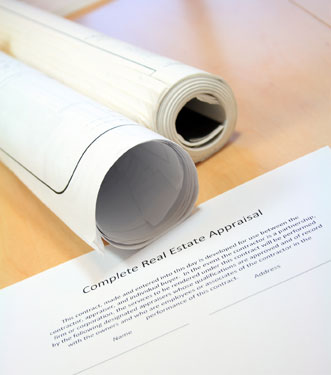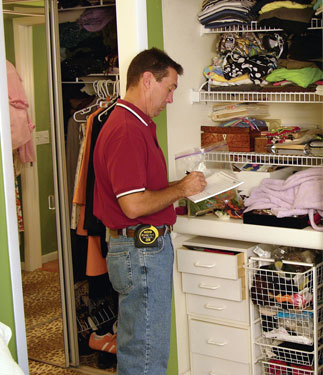
 by Kimberly Blackford
by Kimberly Blackford
With a sagging housing market like we’ve seen in recent years, all homeowners are looking for ways to maximize their home and get the highest appraisal possible whether they need equity from their home or want a lower mortgage payment.
Below are some quick tips and things to remember to do prior to setting up the appointment for an appraisal.
- The appraiser will check all rooms for obvious damage that could affect the overall value of your home, so scope out your entire home for anything that needs fixing.
- The appraiser will verify the upgrades if the homeowner provides a list of these upon their arrival. Create a thorough list with all upgrades, additions and special features that need to be pointed out to the appraiser.
- The appraiser will note all permanent features to a home that will affect value. For example, built-in appliances in the kitchen. Any removable appliance is not included in the appraised value.
- The appraiser will check the basement for upgrades and finishing, but a basement is never included in the square footage. An updated finished basement can increase a property’s value, but they are never included in the total square footage.
- The appraiser will always check the furnace and air-conditioning units to make sure they exist and are in working order.
- An appraiser will also verify the number of bedrooms in a home. A bedroom is defined as a room with at least one closet and one window. So, never turn a bedroom into a den or merge two bedrooms into one unless you have 4 or more bedrooms to begin with in your home.

- Appraisers will appreciate a home that does not have cracks in the walls, or unfinished remodeling projects like painting jobs. In fact, don’t start a project you will not have time to finish in your home before an appraisal; it can negatively affect your home’s value.
- The appraiser will also check the front and back of the house often taking photos of both. Then, they will measure all land area on the property.
- The appraiser will make sure you have GFI outlets within six feet of all sources of water. This means all the sinks in your kitchen and bathrooms need this type of outlet.
- An appraiser will look in your attic to make sure you have adequate insulation. Adding an attic fan will also be a nice touch since it will show off a well maintained home.
- If your home was built prior to 1978, then it is wise to check for peeling paint chips. Paint used in homes before 1978 had lead in it. But, do not sand any peeling surfaces in a home built before 1978, just prime and paint. It is unhealthy to sand the paint because it causes paint particles to become airborne.
- Appraisers will check the home’s roof and make sure it is in good shape. A roof over 10 years old can affect the home’s value.
- Your home's exterior will make a difference in the value of your home and brick is superior to vinyl siding. And, never cover a brick home with siding. It will greatly affect its value.
- Decks are factored into an appraisers report as well as any storage buildings on the property. If you want the best appraisal possible, use pressure treated decking. Covered porches are also factored into an appraisal. If your deck or covered porch needs to be stained, then before an appraisal is the perfect time.
- If you are able to enclose a porch or add extra square footage to your home, then do it! Making a porch into a sunroom and then adding heating and A/C can add as much as $25,000 to your home’s value.
- If a half bath can be added to a home, then do it! There never seems to be enough bathrooms in most homes today.
- A 2-car garage carries more weight than a 1-car garage, but what is even better is converting some garage square footage into more square footage for your home.
Carry out the things listed above, and you will be thanking yourself in the end. Being a diligent homeowner is hard work, but taking pride in keeping your home in its best condition will be apparent when it’s time for an appraisal and that will be reflected in the appraisal amount you receive for your home.
Here are some related articles:
Save this article to:
back to top